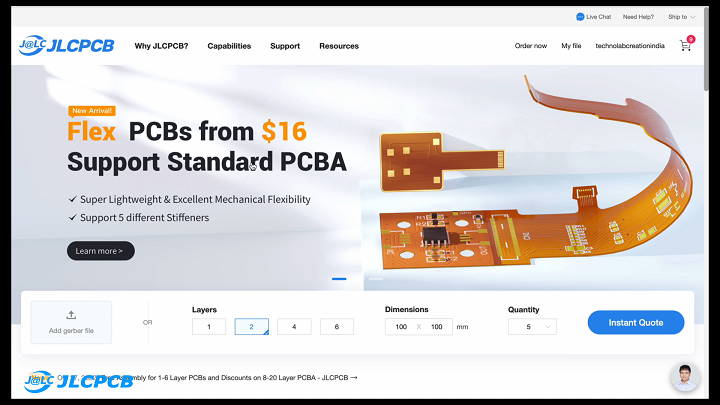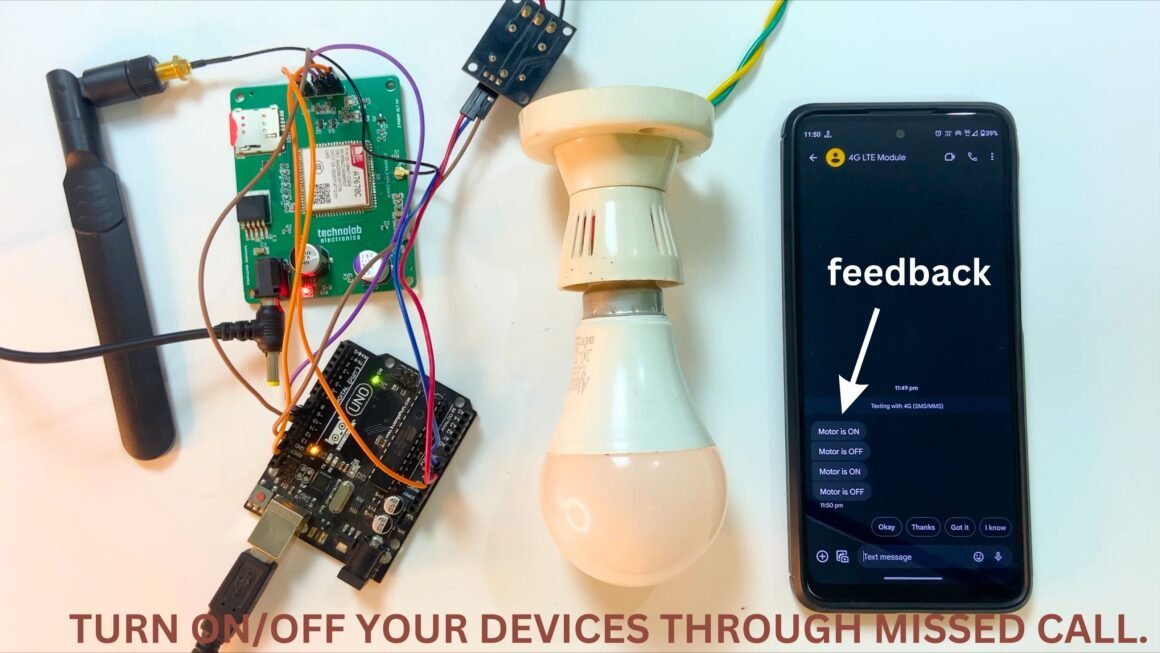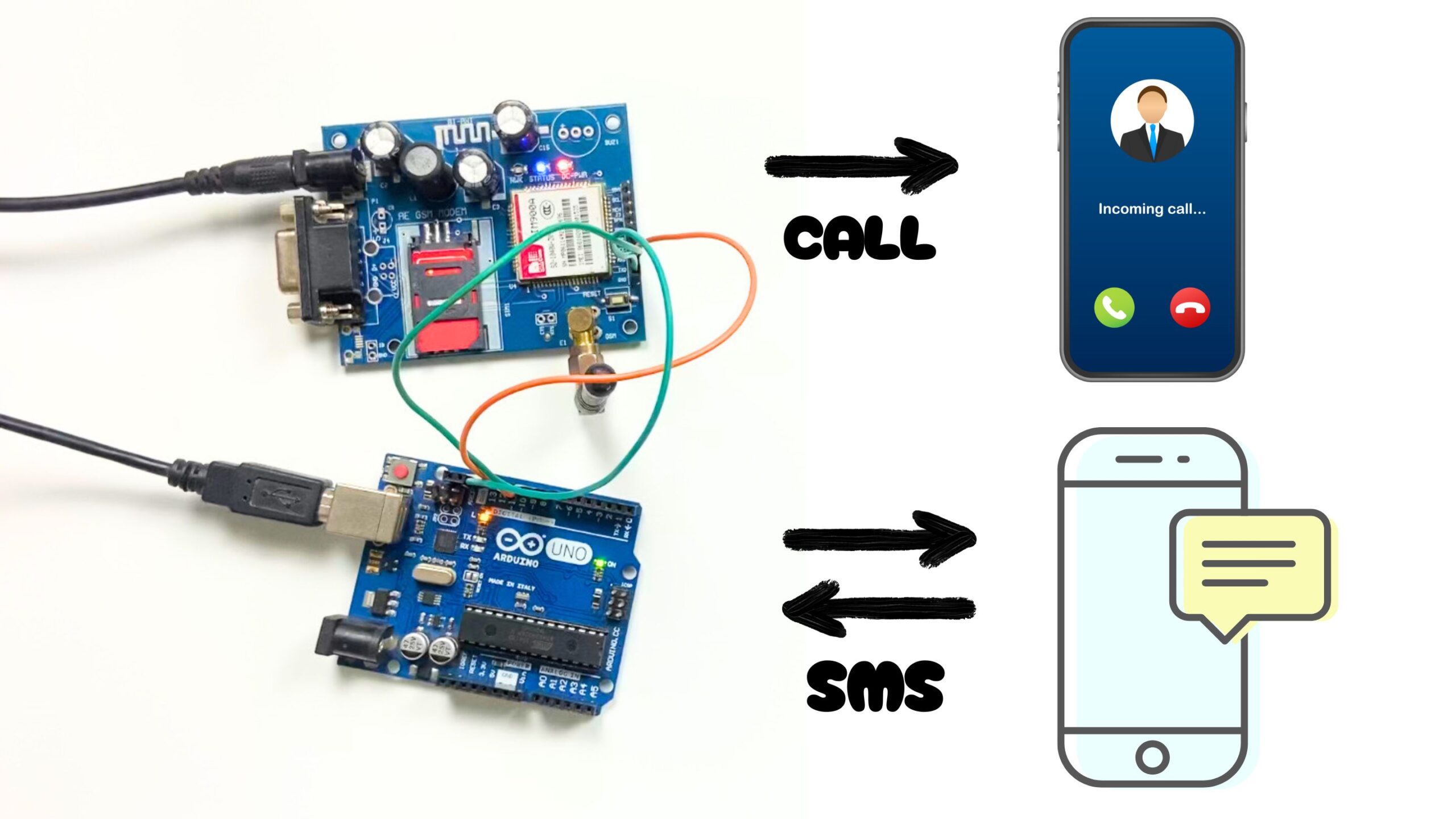In this Article, I am going to introduce my New PCB Design, 4G LTE Module. We have made lots of cool projects using this 2G GSM Module Such as home automation, location tracking, sensor monitoring and remote sensing.

This 2G GSM Module is Awesome but this is era of 4G and 5G, 2G is outdated technology now. So Say goodbye to the limitations of the 2G GSM Module and welcome the future: The 4G LTE Development Board Design by technolab creation and manufactured by JLCPCB.

This 4G LTE Module is a versatile and powerful communication module that supports a wide range of wireless communication modes, including LTE-TDD, LTE-FDD, GSM, GPRS, and EDGE. It is based on the SIMCOM A7670C LTE modem.
Now we have a question, can this module Support JIO SIM-Card? The Ans is YES this module will Support JIO SIM Card.

And next best thing is that ,this module not only supports 4G Networks this module is also compatible with all 2G and 3G networks as well.

PCB Design.
This is the Schematic of 4G LTE Module.

After making the Schematic, Convert it into PCB, Arrange and place all the components in desirable places, Once the layout is ready route the wiring and complete the design of PCB.

JLCPCB

This article is sponsored by JLCPCB , a leading manufacturer specializing in PCB prototype and fabrication. With their fully automated production lines housed in their own factories, they guarantee excellent quality and consistency in their products, adhering to certifications such as ISO 9001:2015, ISO 14001:2015, and IPC-6012E.
JLCPCB is not only renowned for its high-quality PCBs but also for its extraordinary savings and guaranteed satisfaction. They offer a range of services including PCB assembly with over 350,000 in-stock parts, 3D printing with various materials like resin, nylon, and metal, and high-precision SMT stencils created with state-of-the-art LPKF machines.
Experience fast and stable delivery with JLCPCB, where over 98% of orders are shipped on time, allowing you to iterate your projects more freely with their low-cost and fast-turnaround services. Moreover, their friendly support team is available 24 hours a day through email, live chat, and phone to assist you at any time.
Choose JLCPCB as your PCB partner to enjoy quality products, extraordinary savings, and guaranteed satisfaction.
Features & Specifications

1.Wireless Communication Modes: This board supports LTE-TDD, LTE-FDD, GSM, GPRS, and EDGE, which make it suitable for a wide range of applications.
2.High-Speed Data Transfer: This board supports a maximum downlink rate of 10Mbps and a maximum uplink rate of 5Mbps.
3.Serial Interface: This board features a serial interface that allows for simple communication with a computer or laptop via a USB to Serial adapter or TTL converter. AT instructions are used to communicate with the A7670C.
4.External Antenna Support: The board features a U.FL male connector, allowing for the connection of an external antenna. This provides greater flexibility in antenna placement and can improve signal reception in areas with poor coverage.
5.Micro SIM Card Holder: The board features a Micro SIM Card Holder, allowing for easy insertion and removal of SIM cards.
6.UART Logic Level Conversion: The board has onboard UART Logic Level Conversion, and VDD Needs to be connected to the host reference voltage.
7.Voltage Regulation: MIC29302WU is used to step down the input voltage, allowing input voltage as low as 5V.
8.LED Indicators: This board features a Power LED and Network Status LED.
9.Supported Bands: This board supports LTE-FDD B1/B3/B5/B8 and LTE-TDD B34/B38/B39/B40/B41.
10. Ultra-Low Sleep Mode Current Consumption: This board has an ultra-low sleep mode current consumption of less than 10mA.
11. Power input: This board has dedicated slot for power supply, I will recommend to use 12volt & 2 Amp Power Adaptor for it.
Connections with Arduino.
To communicate with this module you can use any of the microcontroller available like Arduino, ESP32 kind of anyone.


I am going to use Arduino UNO, Now make the connection as per this circuit diagram.

And make sure to put the Arduino in Reset mode, otherwise it won’t work.
4G LTE Antenna.
The 4G LTE Antenna with 3.5dBi gain is a versatile and high-performance antenna designed for use with 4G LTE modules and devices. It is optimized for maximum efficiency and peak gain, making it ideal for delivering top-notch throughput on all major cellular bands worldwide. This foldable antenna is suitable for a wide range of applications, including access points, terminals, and routers. It comes with an extender connector for compatibility with specific CPEs, routers, and signal boosters.

Featuring a tilt-and-swivel SMA connector, this antenna offers full flexibility in its positioning, allowing it to be used vertically, at a right angle, or any angle in-between. With a frequency range of 2.4GHz-5GHz and a gain of 3.5dBi, this indoor antenna provides high gain and is perfect for various applications within the specified frequency range. When used as an access point, it is ideally positioned at the center of the coverage area for optimal performance. Its foldable design makes it easy to install and adjust, ensuring reliable and efficient connectivity for your 4G LTE devices.

AT Commands
Now we are going to test this 4G LTE module if it is working or not, I will send AT commands to this module using Arduino IDE serial monitor and I will check if it will responses not?

Open Arduino IDE and go-to tools and select the board as Arduino Uno, Select the port as well, then open serial monitor and the select the baud rate 115200.
Default baud rate of this 4G LTE Module is 115200, So we need to put our serial monitor on the same baud rate.

Enter the most basic AT Command that is AT itself, and you should get the “OK” response from the 4G LTE Module.

4G LTE over 2G GSM Module.

The benefits of using a 4G LTE GSM module over a 2G GSM module for making projects are numerous. some of the key advantages are:
1.Faster Data Speeds: 4G LTE offers significantly faster data speeds compared to 2G. This allows for quicker data transfer, making it ideal for applications that require real-time data exchange or high bandwidth.
2. Lower Latency: 4G LTE has lower latency compared to 2G. This means that the time it takes for data to be sent from the sender to the receiver is much shorter. This is particularly important for applications that require real-time communication.
3. Support for More Devices: 4G LTE can support more devices simultaneously compared to 2G. This is important for projects that involve multiple devices communicating with each other.
4. Improved Security: 4G LTE offers better security features compared to 2G. This includes stronger encryption and more robust authentication methods.
5.Future-Proofing: Many mobile network operators are phasing out 2G networks in favor of 4G LTE and 5G networks. By using a 4G LTE GSM module, you are ensuring that your project will continue to work as 2G networks are decommissioned.
6.Better Coverage: In many areas, 4G LTE coverage is more extensive and reliable than 2G coverage. This means that your project is more likely to have a stable and strong connection.
7.Support for IoT Applications: 4G LTE is better suited for IoT (Internet of Things) applications compared to 2G. This is because 4G LTE can handle the higher data speeds and lower latency requirements of IoT devices.
8.Higher Capacity: 4G LTE networks have higher capacity compared to 2G networks. This means that they can handle more data traffic, making them more suitable for projects that involve large amounts of data transfer.
9.Support for Advanced Features: 4G LTE supports advanced features such as HD video streaming, high-quality voice calls, and mobile broadband. This makes it more versatile and suitable for a wider range of projects.
In conclusion, while 2G GSM modules may be cheaper and consume less power, 4G LTE GSM modules offer significant advantages in terms of speed, capacity, coverage, and future-proofing. Therefore, for most projects, especially those that require high data speeds, low latency, or support for multiple devices, a 4G LTE GSM module would be a better choice.
That’s all for this Article, I hope you have enjoyed and learned something new.




